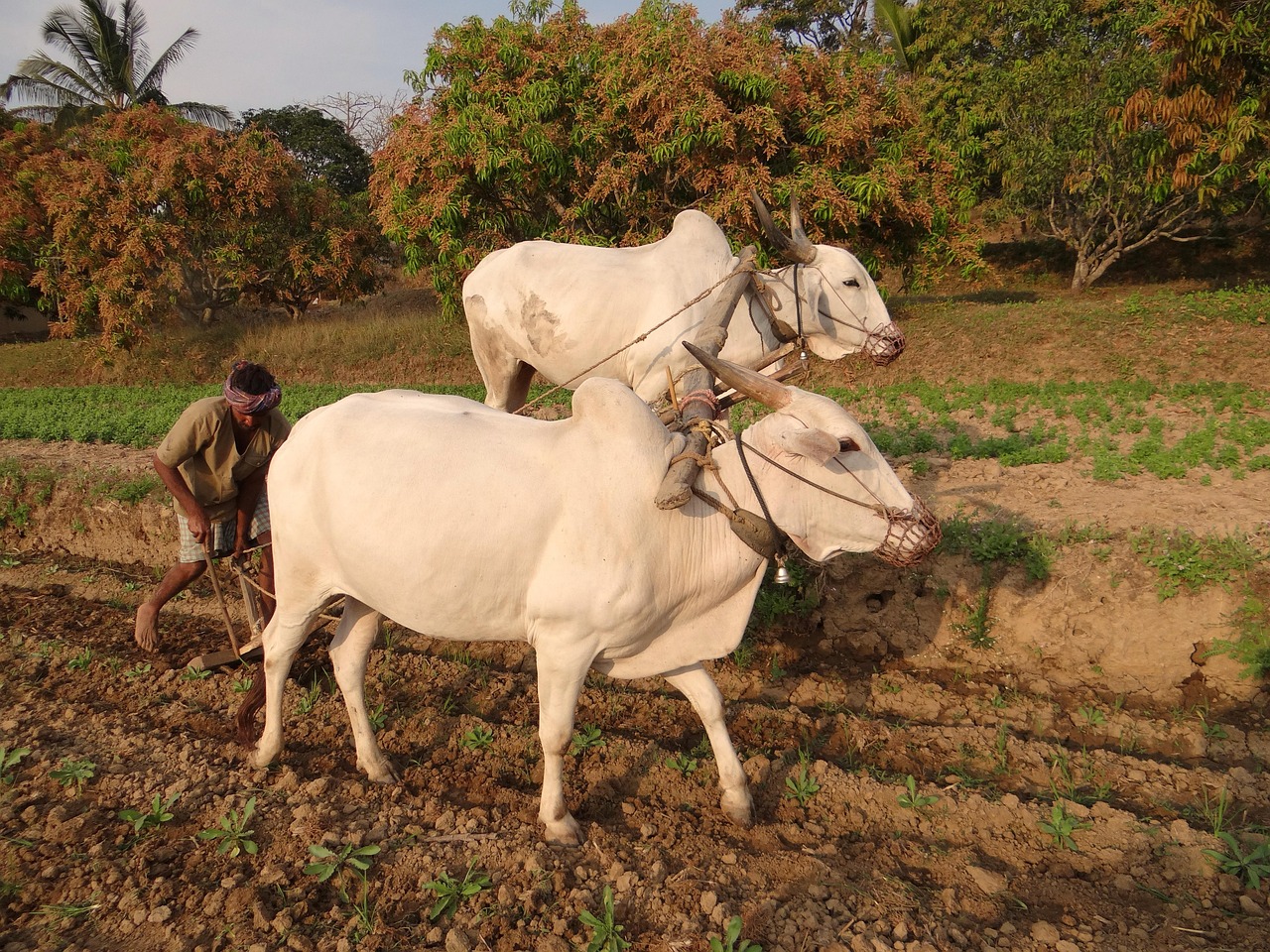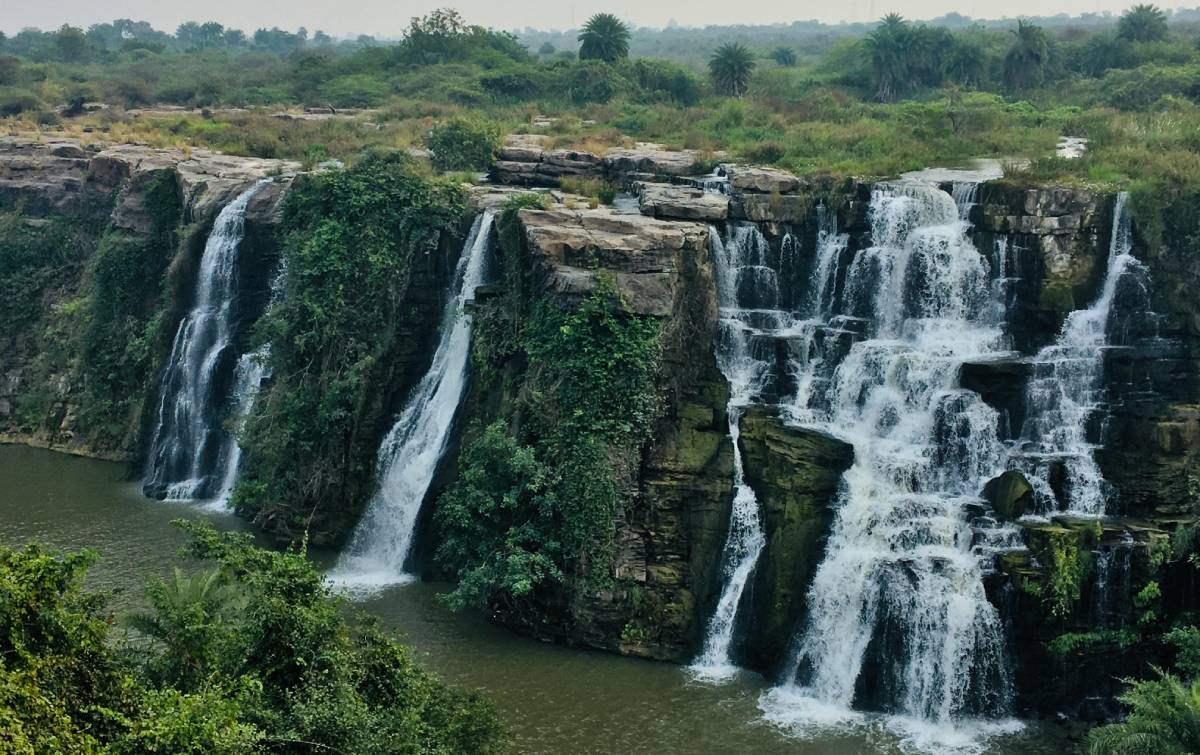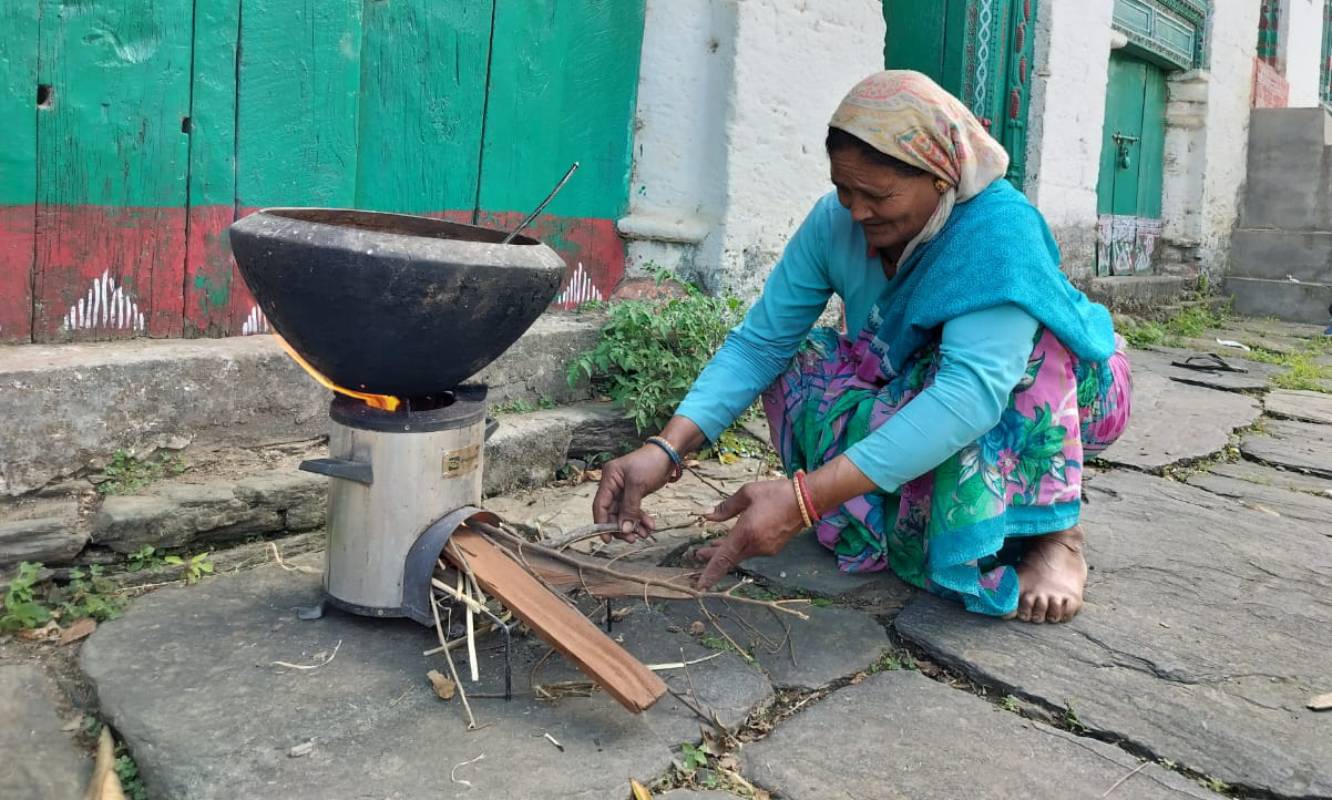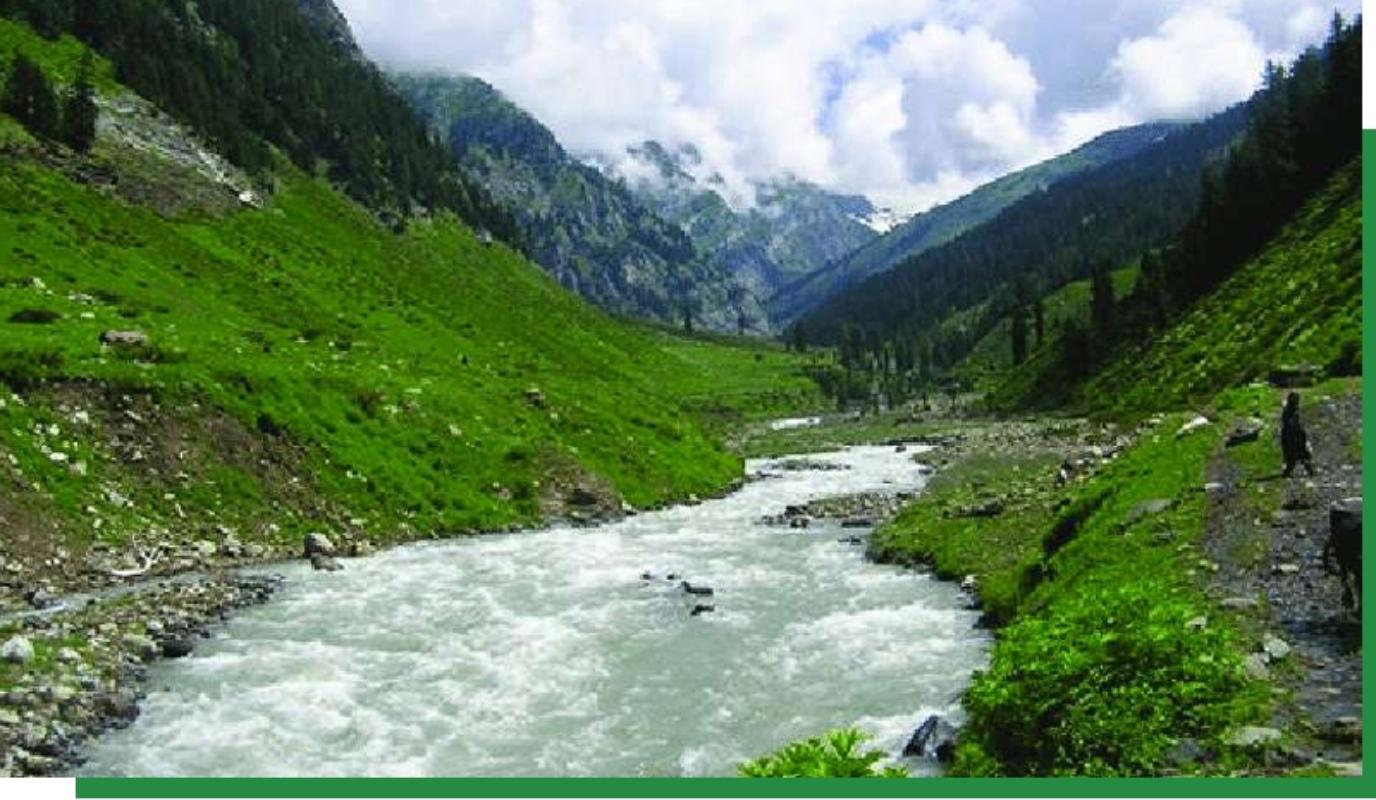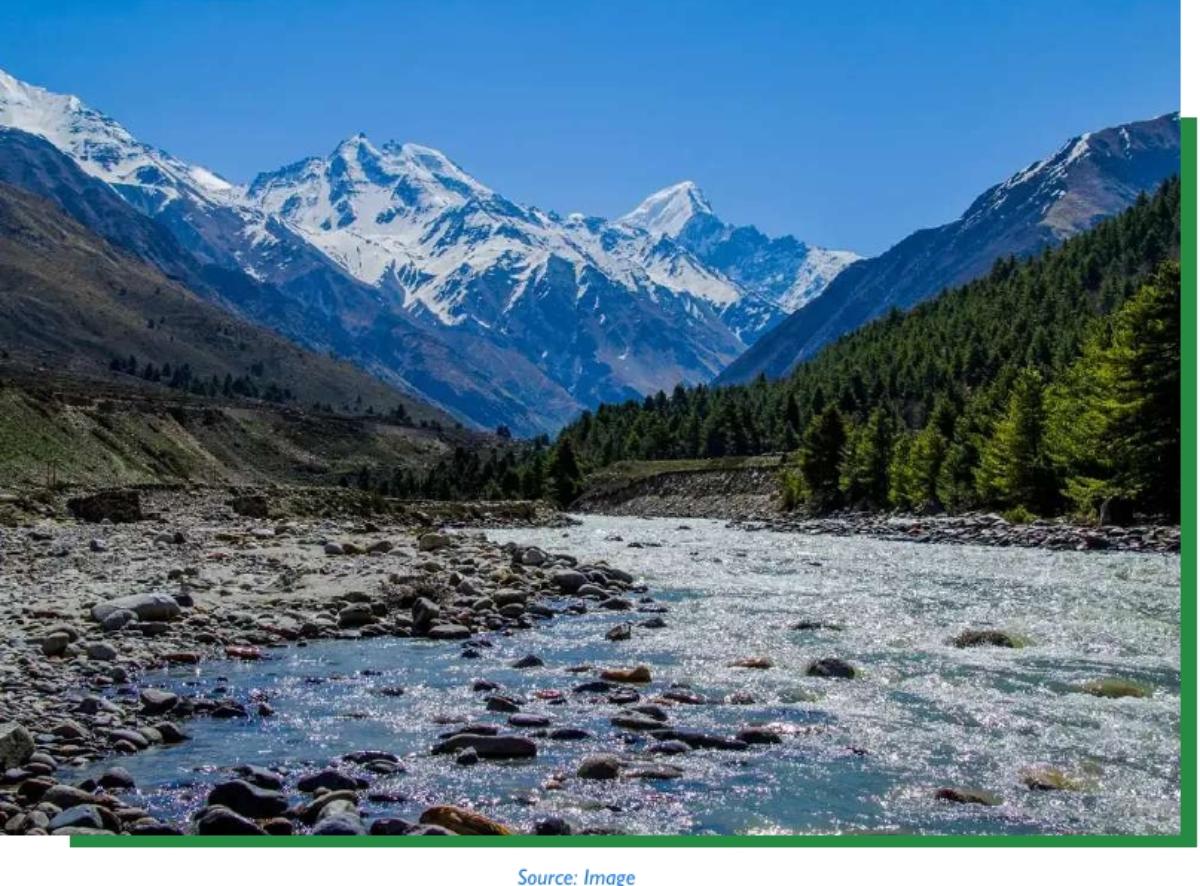Introduction
Nearly 30% of India’s landscape is under degradation and desertification. Successive surveys related to land degradation in India, reveal that despite several announcements and policy changes, the desertification and degradation of land and forest continues to rise. It has posed serious threat to environment, biodiversity, local economy and food security. Globally and nationally, India has been very vocal in addressing this issue. Internationally, it has committed to regenerate its sizable landscape through international commitments such as Nationally Determined Contribution (NDC) under UNFCC, Convention on Biodiversity Target (CBT), Land Degradation Neutrality (LDN) target under UNCCD and Bonn Challenge anchored by IUCN. At the national level, it has initiated various programs to meet these goals, which includes Soil and Water conservation programs like DPAP, Wasteland Development Program, Watershed Development Program, Joint forest Management, Environment Policy, National Action Plan for Climate Change (NAPCC), Green India Mission, MGNREGA, CAMPA and many others. Despite all these policy decisions, the continuous rise in degradation of land and forest is a serious environmental, economic, social and cultural issue in India. This article looks at the status of India’s commitment, implementation of policies and reasons for shortfall.
Land Degradation in India
According to a latest publication of ISRO, about 29.32% of total 328.72 million hectare (mha) geographical area of India is affected by land degradation. It accounts for 96.4 mha of forest, non-forest and agriculture land spread across the country. Disturbingly, the total degraded land has increased to this level in 2011-13 from 94.53mh in 2003-05. In these eight years, 1.87 mha more land degraded or deserted due to various reasons. The ‘Desertification and Land Degradation Atlas of India’ published by the Space Application Centre (ISRO) published in 2016 reveals that about 24% of desertification/land degradation with respect to total geographical area is contributed by nine states namely Rajasthan, Maharashtra, Gujarat, Jammu & Kashmir, Karnataka, Jharkhand, Odisha, Madhya Pradesh and Telangana. State specific analysis shows that more than 50% land of states like Jharkhand, Rajasthan, Delhi, Gujarat and Goa is under desertification/land degradation. Kerala, Assam, Mizoram, Haryana, Bihar, Uttar Pradesh, Punjab and Arunachal Pradesh have shown less land compare to their total geographical area under desertification/land degradation in the Atlas[1]. Total land degradation in India is given in the following table.
| Process of Degradation | Area under Desertification (mha) | ||||||||
| 2011-13 | 2003-05 | ||||||||
| Arid | Semi-Arid | Sub-Humid | Total | Arid | Semi-Arid | Sub-Humid | Total | ||
| Vegetation Degradation | 2.86 | 13.48 | 6.65 | 22.99 | 2.81 | 13.39 | 6.34 | 22.55 | |
| Water Erosion | 3.03 | 17.51 | 8.97 | 29.51 | 3.12 | 17.07 | 8.91 | 29.11 | |
| Wind Erosion | 17.63 | 0.56 | 0.00 | 18.19 | 17.72 | 0.57 | 0.00 | 18.30 | |
| Salinity/ Alkalinity | 2.52 | 0.86 | 0.09 | 3.48 | 2.52 | 1.07 | 0.21 | 3.80 | |
| Water Logging | 0.02 | 0.08 | 0.31 | 0.42 | 0.02 | 0.08 | 0.25 | 0.36 | |
| Mass Movement | 0.84 | 0.11 | – | 0.96 | 0.76 | 0.11 | – | 0.87 | |
| Frost Shattering | 2.94 | 0.46 | 0.01 | 3.41 | 2.74 | 0.43 | 0.01 | 3.18 | |
| Man Made | 0.04 | 0.14 | 0.16 | 0.35 | 0.04 | 0.14 | 0.14 | 0.32 | |
| Barren | 0.25 | 0.28 | 0.05 | 0.58 | 0.25 | 0.28 | 0.05 | 0.58 | |
| Rocky | 0.30 | 0.97 | 0.02 | 1.29 | 0.29 | 0.97 | 0.02 | 1.28 | |
| Settlement | 0.11 | 0.93 | 0.44 | 1.47 | 0.07 | 0.75 | 0.33 | 1.15 | |
| Grand Total | 30.54 | 35.40 | 16.70 | 82.64 | 30.35 | 34.85 | 16.28 | 81.48 | |
Source: Space Application Centre, Ahmedabad
The Atlas on land degradation and desertification of India, published by the Space Application Centre, Ahmadabad has identified vegetation degradation, water erosion, wind erosion, water logging, salinity/alkalinity,mass movement of soil and rocks , frost heaving, frost shattering and man made land degradation processes such as mining/quarrying, brick kilns, industrial effluents, urban agglomeration and waste as major reasons of land degradation and desertification in India.
Land degradation has direct correlation with the loss of livelihood in India, as a large part of the population is still dependent on natural resources for their livelihood. Adverse impacts of land degradation pose challenges such as low agro-productivity, environment loss, food security and overall quality of life of people. It also poses challenges like loss of biodiversity and climate change[2]. Moreover, this can have far reaching impacts on the growth trajectory of the country.
The Energy and Resource Institute (TERI) in its recent study on economics of desertification and land degradation found that the cost of land degradation through various processes in India cost around 2.5% of the country’s GDP in 2014-15. The study of TERI in 2018 has also estimated investment required for reclamation of land degraded by five major processes namely water erosion, wind erosion, forest degradation, water logging and salinity. The study found that India requires Rs. 2948 billion (2014-15 price) to reclaim 94.53 mha degraded land as per newest survey of by SAC, Ahmadabad.
India’s International Commitments
India has ratified to the UN Framework Convention on Climate Change (UNFCCC), the UN convention to combat desertification (UNCCD) and Convention on Biological Diversity (CBD). The objectives of each of these have been highlighted in following matrix.
The regeneration of natural resources is a crucial strategy of India as reflected in NDCs submitted to UNFCC. NDC no. 5 and 6 provides for regeneration of land, forest and biodiversity in the country. It has ambitious plan to absorb 2.5 to 3 billion tonnes of carbon dioxide (CO2) by 2030 through additional forest and tree cover. To meet this target India requires not only regenerating degraded forest but also creating huge forest cover by 2030. According to an estimate, it needs to create around 30millon ha new forest. It has also committed to enhance investment for climate vulnerable sectors such as agriculture, Himalayan region and coastal areas.
The government of India is convinced that the Green India Mission could achieve half of this target3. However, the Parliamentary Standing Committee for the Environment, Forest and Climate Change found that the Green India Mission is grossly underfunded. The budget allocation for the mission has sharply declined from Rs. 89.53 core in 2015-16 to just Rs. 47.8 crore in 2017-18[3].
Similarly, in the recently concluded Conference of Parties under UNFCCD, India has committed to regenerate 26 million ha land as part of its commitment under Delhi Declaration. The IUCN reported[4] that India’s forest cover increased by 9.8 million ha from 2011-2018 with increased effort due to the Bonn Challenge. This roughly translates to 1.4 mha per year, and if forest cover increases at the current rate, an additional 16.8 mha can be forested by 2030, reaching the target of 26 mha as announced. However, an action plan for achieving the same is still awaited.
Under the Convention on Biological Diversity (CBD), India is one of the first six countries[5] to have submitted the 6th report on NBSAPs to the CBD. The report shows that out of 12, measures for 10 targets have been effective and significant progress made. For the 4th target on controlling alien species and measures NBT 12 on assessment of financial and technical resources have been partially effective. Whereas with respect to NBT 6 and 9 on Conservation of areas important for species and ecosystem services with effectiveness and Ensuring access and benefit sharing measures have exceeded expectations and significant improvements have been noted.
Land Regeneration Initiatives in India
Regeneration of land and forest has been one of the core program of rural development initiative in India. The focused intervention in this sector goes back in 1970s when the government of India stated programs like Drought Prone Area Development (DPAP) and Desert Development Plan (DDP) to address problems of specific areas. Such various other initiatives by government of India are highlighted below:
Soil and Water Conservation under DPAD and DDP:
The Drought Prone Area Development (DPAP) was one of the first development programmes launched to address the problems of a specific area such as drylands. Launched in 1973-74, the programme was set up to reduce the effects of drought on fragile ecosystems and vulnerable populations. The Desert Development Plan (DDP) was set up to combat desertification and restore ecological balance in the desert areas of the country like Rajasthan, Gujarat and Himachal Pradesh. The department of land resources (DOLR), Ministry of Rural Development (MORD) reports that DPAP had since its inception till 1995 treated an area of 57.14 lakh ha, and from 1995-96 till 2005-06, had treated an area of 65.74 lakh ha with the watershed approach. Since 1995-76, 947 blocks in 164 districts in 13 states have been covered, panning the dry sub-humid region of the country have been covered.
The National Wasteland Development Board, 1985
The National Wastelands Development Board (NWDB) was set up under the Ministry of Forests and Environment in 1985 in order to address[6] land degradation, restoration of ecology and meet the increasing demand of fuelwood and fodder at the national level. The board’s activities were focused more on tree plantations during the seventh five year plan (1985-1990) but in 1992, as the Board was placed under the Ministry of Rural Development, as the department of wasteland development.
National Watershed Development Program since 1990s
The National Watershed Development Programme for Rainfed Areas was launched in 1990-91 under the Ministry of Agriculture. The twin formula of integrated watershed management and sustainable farming systems formed the basis for it. In 2000-01, the scheme was subsumed under the Macro Management of Agriculture (MMA) as implemented under it in 28 states and 2 Union Territories.
Joint Forest Management Programs since 1990s
The Joint Forest Management (JFM) programme came into implementation in 1990[7]. State forest departments and local communities were to take part in management of degraded or deforested forests together. While all income for non-wooded forest produce was to go to the locals, their share in the sale of timber was 25%, while the rest would go to the forest department. Village level committees were to be formed for this joint management. Further, each state had its own guidelines according to which JFM was to be implemented.
The area covered by JFM in 2010 was approximately 24.6 million ha, which is about 30% of the forest cover of the country with around 99 lakh beneficiaries participating[8]. In several states, almost 3/4th of the forest cover was under JFM such as Jharkhand (72.94%), Bihar(71.42%) and Madhya Pradesh(70.62%)[9].
Green India Mission, 2014
The Green India Mission (GIM) is one the eight missions outlined under the National Action Plan on Climate Change (NAPCC). It the newest mission included in the Action Plan in 2014. This scheme was proposed for 10 years. It aims at protecting; restoring and enhancing India’s diminishing forest cover and responding to climate change by a combination of adaptation and mitigation measures[10]. The mission has aims to increase forest cover by 5mha and improve quality of forest/tree cover of 5mha by 2030.
Compensatory Afforestation Fund Management and Planning Authority (CAMPA)
The CAMPA authority created in 2001 by the Supreme Court to manage fund collected towards compensatory afforestation. For last two decades, the collected CAMPA fund remains largely un-utilized and in some case it was diverted for other purposes. In August 2019, the government of India released Rs. 47,436 crore of CAMPA fund to 27 different States and UTs.
Mahatma Gandhi National Employment Guarantee Scheme (MG-NREGA)
The Mahatma Gandhi National Rural Employment Guarantee Scheme has evolved as a major program for regeneration of natural resources in the rural part of India. While this program guarantees 100 days of unskilled job per year for every rural household, it also has played crucial role in creating individual and community level rural assets. These assets are largely constructed to re-generate local natural resources.
Reasons for Shortfall
Despite several regulations and laws enacted during pre and post independence, land remains one of the most contentious issues. The forest department is the biggest landowner in this country with nearly 22% of total landmass in its control. Within the forest area, nearly 11% forest land is highly degraded with canopy density less than 10 percent. Various projects were carried out in last four decades to re-generate this part of forest. However, nothing much could be achieved. The shortfall in achieving desired goal can broadly be categorized in following three categories.
Political Economy of Land Resources
One of the main reasons of this failure cited by various experts is lack of coordination and collaboration between government and local communities. Apart from this there exist contradiction in many government policies affecting natural resources. For example, while the government is keen in Madhya Pradesh to protect tigers and their habitat, simultaneously, it is also adamant for linking Ken and Betwa rivers by fragmenting a crucial tiger corridor in Panna tiger reserve.
Encroachment of common land and other natural resources is another big hurdle in the nobel goal of regenerating land. In many places, these commons have been termed as wasteland, which allows influential rural and urban elite to capture for their personal interest. According to an estimate, land occupied by commons in this country is around 60 million hectare. The 54th round of National Sample Survey (NSSO) in 1999 collected information on common property resources. But no follow-up research or survey was carried out after that66. The launch of the Wasteland Development Program in 1980s shows that the government of India has been concerned about regeneration of natural resources. However, it could not resolve political economy around it. Therefore, various public efforts in the past did not yield desired result.
Inadequate Financial Resources
The financial resources required for regeneration of degraded land is huge. Various studies have found that the government funding alone is not sufficient for the task. Moreover, currently the Mahatma Gandhi National Rural Employment Guarantee program (MGNREGA) is the main financing instrument for the regeneration of natural resources. The last union budget allocated Rs. 60,000 crore for this program. This amount is negligible as compared to the required Rs. 2948 billion to regenerate resources as studied by the TERI.
The inadequate allocation of financial resources has always been major hurdle in implementing programs like DPAP, DDP, Wasteland development board, Joint Forest Management and Green India Mission. The 12thfive year plan approved budget outlay of Rs. 2,000 crore for regeneration of forest land, however the project to achieve this target namely- the Green India Mission’ has been allotted very little fund in last few years. Up to financial year 2017-18, the mission was allotted only Rs. 161.81 crore. Out of this the actual amount spent by various agencies is as low as Rs. 143.96 crore. The MOEFCC admitted that the budget allocation to the mission is very less and it is grossly insufficient67.
Inadequate Institutional Capacity
Other than the adequate allocation of financial resources, the institutional mechanism plays crucial role in the success of any mission. The governments in India realized the need of investing in natural resources for better future as early in 1970s with the introduction of 34 schemes like DPAP and DDP. However, institutions could not be formed to deliver on these objectives. The case of Wasteland Development Board in 1980s is the classic case of this sort. Initially, it was an institution under the ministry of environment & forest. However, later it was moved to the ministry of rural development. More importantly, the board was not given forest land for its regeneration. The confusion over rights and mandate of the board grossly affected its output. It had objective to restore 5 mha land every year, but it could regenerate only 2mha land in total. Many institutions created for regeneration of land resources in last 4-5 decade were also seriously criticized for non-involvement of community. We know that the political economy is one the major hurdle in this process. Despite this, no institutions seriously attempted pro-active collaboration and cooperation with local community.
The Joint Forest Management attempted to involve local communities to some extent but communities were given less power and autonomy compared to the forest department. In many cases, the Panchayati Raj Institutions (PRIs) is the field agency responsible for implementation of various programs. However, in many parts of the country these institutions do not have adequate skill and capacity to handle specialized projects. Moreover, the inadequate devolution of fund, functionary and function to the PRIs also restrict them from performing well. The lesser power and autonomy of PRIs further pushes for top-down planning, where things are planned at higher level, and PRI remains at the receiving end. The lack of skilled human resources is another big challenge faced by the institutions involved in the process of land regeneration. We have been talking about Integrated Water Resource Management (IWRM) and River Basin Management (RBM), however, we don’t have enough qualified human resources to work with these methods.
Conclusion
Various studies including one done by Space Application Centre, Ahmadabad in 2016 reveals that a large part of India’s land mass is under land degradation and desertification. Successive studies also indicated that the process of land degradation is increasing. It has huge direct social, cultural, environmental and economic repercussions, as the majority of Indian population is directly dependent on natural resources. Despite a strong policy framework at national and international level evolved in the last more than four decade to regenerate land and forest, the result remains very poor on the ground.
At home, we have been pro-active in launching relevant policies and scheme, but due to lack of financial resources, inadequate institutional mechanism and unresolved political economy, our progress remained very slow. We as a nation need to learn from our experiences to overcome such barrier.
Footnotes:
[1]http://www.indiaenvironmentportal.org.in/files/file/Desertification_Atlas_2016.pdf
[2]https://pib.gov.in/newsite/erelcontent.aspx?relid=57618
[3]https://www.newsclick.in/green-india-mission-grossly-underfunded-says-report
[4]https://portals.iucn.org/library/sites/library/files/documents/2018-026-En.pdf
[5]https://pib.gov.in/newsite/PrintRelease.aspx?relid=186916 accessed on 15th October 2019
[6]https://dolr.gov.in/integrated-wasteland-development-programme
[7]http://frienvis.nic.in/database/joint_forest_management_1949.aspx
[8]http://frienvis.nic.in/Database/Benefits_from_JFM_2244.aspx
[9]http://frienvis.nic.in/Database/Forest-Area-Covered-by-JFM_2245.aspx
[10]http://moef.gov.in/division/forest-divisions-2/green-india-mission-gim/about-the-mission/
Image by Bishnu Sarangi from Pixabay

